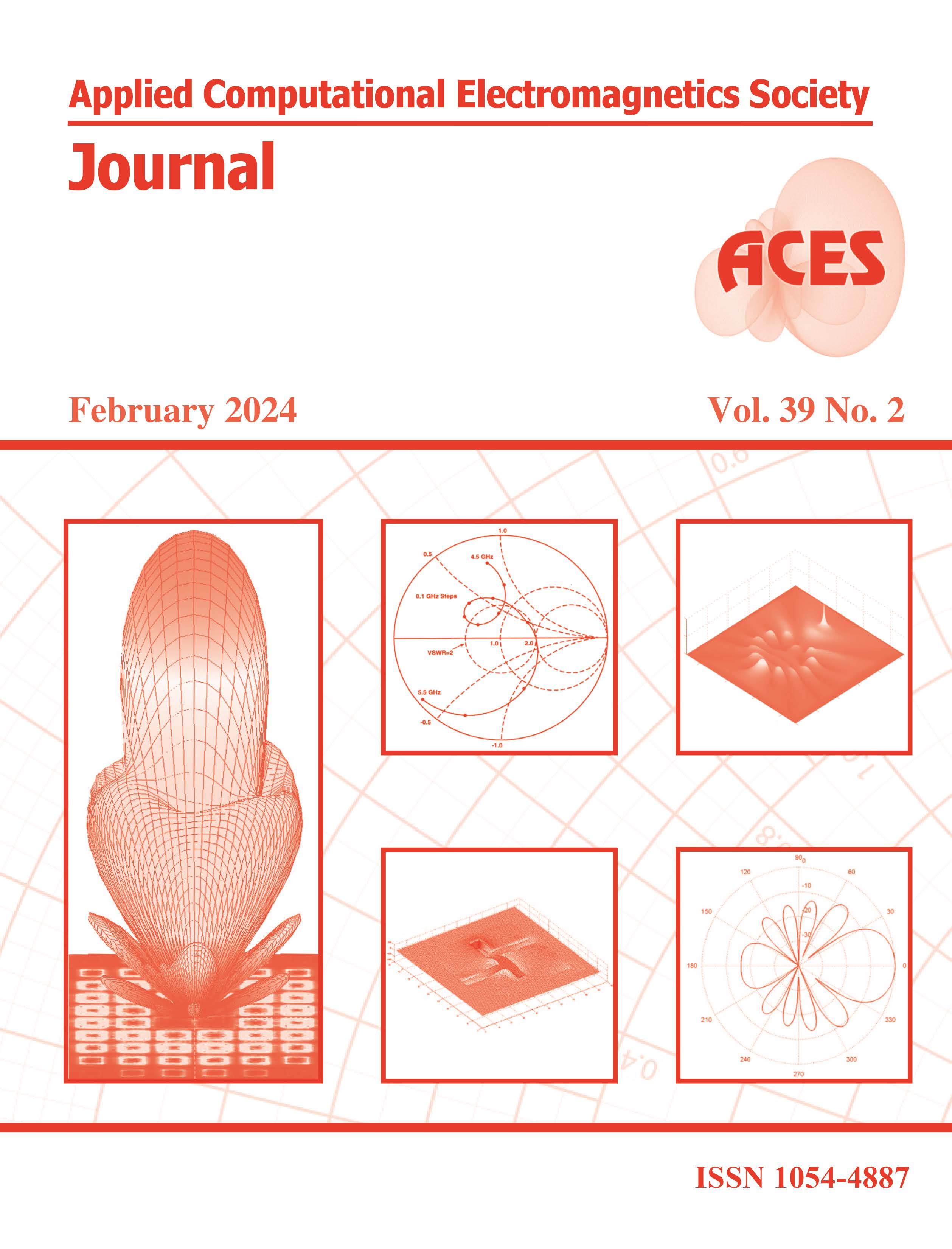Anomalous Magnetization Spikes in the Locally Corrected Nyström Discretization of Static Volume Integral Equation using Tetrahedral Cells
DOI:
https://doi.org/10.13052/2024.ACES.J.390210Keywords:
integral equation methods, locally corrected Nyström method, moment methodAbstract
A locally corrected Nyström (LCN) discretization of a magnetostatic volume integral equation is presented. Anomalous magnetization spikes can occur when the underlying mesh uses tetrahedral cells regardless of discretization order. The mechanism for the anomalous magnetization spikes is discussed, and mitigation of the spikes through use of an LCN-to-Moment Method conversion is investigated. Results are presented validating that the LCN-to-Moment Method suppresses the anomalous spikes.
Downloads
References
L. F. Canino, J. J. Ottusch, M. A. Stalzer, J. L. Visher, and S. M. Wandzura, “Numerical solution of the Helmholtz equation in 2D and 3D using a high-order Nyström discretization,” (in English), Journal of Computational Physics, vol. 146, no. 2, pp. 627-663, Nov. 1, 1998.
S. D. Gedney and J. C. Young, “The locally corrected Nyström method for electromagnetics,” in Computational Electromagnetics: Recent Advances and Engineering Applications, R. Mittra, Ed. New York: Springer, 2014, pp. 149-198.
M. S. Tong, Z.-G. Qian, and W. C. Chew, “Nyström method solution of volume integral equations for electromagnetic scattering by 3D penetrable objects,” IEEE Transactions on Antennas and Propagation, vol. 58, no. 5, pp. 1645-1652, May 2010.
J. C. Young and S. D. Gedney, “A Locally Corrected Nyström formulation for the magnetostatic volume integral equation,” IEEE Transactions on Magnetics, vol. 47, no. 9, pp. 2163-2170, Sep. 2011.
J. C. Young, R. J. Adams, and S. D. Gedney, “Anomalous current spikes in the kocally corrected Nyström discretization of volume integral equations,” 2023 International Applied Computational Electromagnetics Society Symposium, Denver, CO, March 26-March 30, 2023.
D. Schaubert, D. Wilton, and A. Glisson, “A tetrahedral modeling method for electromagnetic scattering by arbitrarily shaped inhomogeneous dielectric bodies,” IEEE Transactions on Antennas and Propagation, vol. 32, no. 1, pp. 77-85, 1984.
R. A. Pfeiffer, J. C. Young, R. J. Adams, and S. D. Gedney, “Locally corrected Nyström to moment method conversion for volume integral equations,” IEEE Transactions on Magnetics, vol. 55, no. 4, pp. 1-7, 2019.
M. Shafieipour, I. Jeffrey, J. Aronsson, and V. I. Okhmatovski, “On the equivalence of RWG method of moments and the locally corrected Nyström method for solving the electric field integral equation,” IEEE Transactions on Antennas and Propagation, vol. 62, no. 2, pp. 772-782, Feb. 2014.
R. D. Graglia and A. F. Peterson, Higher-Order Techniques in Computational Electromagnetics, Sci-Tech Publishing, 2016.
S. D. Gedney, A. Zhu, and C.-C. Lu, “Study of mixed-order basis functions for the locally corrected Nyström method,” IEEE Transactions on Antennas and Propagation, vol. 52, no. 11, pp. 2996-3004, Nov. 2004.




